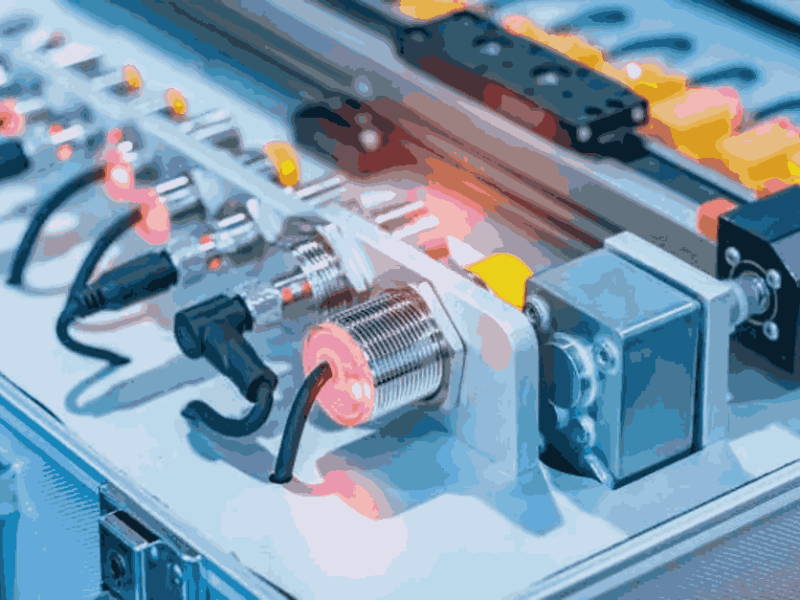Restoring a car is more than just a hobby. It’s a dedication to preserving history, showcasing craftsmanship, and, of course, a love for automobiles. The rewarding process of bringing a vintage vehicle back to life is a thrilling experience, but one that requires the proper tools and supplies.
From the mechanical grunt work of the engine bay to the subtleties of the interior, every aspect of the restoration demands precision and patience. In this guide, we’ll detail the essentials you’ll need in restoring a car.
Table of Contents
The Heart of the Revival: Mechanical Tools for Engine Restoration
When you’re breathing new life into a classic car, the engine is often the main focal point of your efforts. Here are the core mechanical tools you’ll need for an engine restoration project.
Socket and Wrench Sets
A high-quality socket and wrench set is indispensable for working on engine parts. Look for sets with a variety of both metric and standard sizes to ensure you have the right tool for the job. Investing in a set with 6-point sockets can provide better grip and less chance of stripping bolts, a common issue in older vehicles with corroded or rusted components.
Torque Wrench
Tightening bolts to the correct spec is crucial in engine assembly. A torque wrench ensures that every fastener is tightened to the recommended torque, which is vital for engine safety and performance.
Engine Hoist and Stand
For the major lifting involved in the engine’s removal and installation, a hoist is an absolute must. Coupled with an engine stand, you have a secure platform to work on the motor outside of the car, making the precision assembly much more manageable.
Compression Tester
A compression tester assesses the health of the engine by measuring cylinder compression. This critical diagnostic tool helps identify worn or damaged valves, piston rings, and head gaskets, providing crucial insights into the engine’s condition.
Digital Caliper
Whether you’re measuring for a new bearing or checking the fit of a piston ring, a digital caliper gives you the precision to ensure every dimension is accurate. With accurate measurements, your engine rebuild will run like clockwork.
Keeping it Straight and True: Bodywork and Paint Essentials
The exterior of your car is its face to the world, and a professional finish can transform the mundane into the magnificent. Here’s what you need for a flawless outer restoration.
Dent Repair Kits
Minor dents are inevitable in an older car. A good dent repair kit, including slide PDR hammers, can address everything from door dings to larger, deeper dents. With the right technique, you can restore the car’s body without disturbing the paint.
Sanding and Grinding Tools
Removal of old paint and rust is the first step in resurfacing your car’s exterior. A combination of orbital sanders, grinders, and sandblasters will prepare the body for a clean slate. Use these tools with different grits to smoothen metal and avoid undulations in the final paint job.
Paint Guns and Booths
A professional quality paint gun sprays a sleek coat of paint, transforming the vehicle’s appearance. A temporary paint booth, typically set up in a garage, ensures a dust-free environment, vital for a smooth, blemish-free finish like those done in professional auto body shops.
Body Filler and Primer
Before painting, any imperfections need correcting. Body filler, followed by a high-quality primer, provides a smooth foundation for the paint. It’s essential to take your time, as the quality of this foundation directly impacts the final aesthetic of the car.
Sawhorses and Stands
When working on individual panels, having a secure place to put them is crucial. Sawhorses and panel stands allow you to position body parts at a comfortable working height for repair and refinishing.
Interior Excellence: Tools and Supplies for Upholstery and Trim
The interior is where you connect with your vehicle, and a full restoration with the right tools and supplies is like traveling back in time to the car’s glory days.
Upholstery Tools
A set of specialized upholstery tools is necessary for removing and installing new seat covers, headliners, and other soft materials. These tools prevent damage to the fabric and the car’s interior panels during the restoration process.
Cleaning and Preparation
Before installing new upholstery, thoroughly clean the interior with appropriate cleaners for each surface. A clean and well-prepared surface ensures maximum adhesion of the new material, from carpet to vinyl.
Trim Removal Kits
Door panels, dashboards, and other interior trim require delicate removal to avoid damage. Trim removal kits provide a variety of tools to fit different clips and fasteners without scratching or breaking them during disassembly.
Fasteners and Hardware
Replacing worn or non-original fasteners and hardware with a fresh set finishes the interior restoration with authenticity. Ensure proper fit and correct thread pitches for ease of installation and a secure fit.
Interior Lighting and Accessories
To complement the fresh look, consider new interior lights, custom shift knobs, and other accessories that resonate with the car’s era and your style. These elements add the finishing touch to an interior restoration.
Revving up: Specialty and Safety Equipment
Finally, there are several specialized and safety-related items that you should equip yourself with before starting any car restoration project.
Specialty Lubricants and Fluids
Specialty lubricants and fluids such as engine assembly lube, chassis grease, and brake fluid are specific to each area of the vehicle and keep moving parts intact and functional. These fluids are the lifeblood of your car’s systems.
Safety Gear
Safety is paramount in any car restoration project. Invest in a good set of safety glasses, gloves, and a full set of protective gear. A fire extinguisher is also a must to handle any unexpected flare-ups.
Organization and Storage
With the myriad of small parts involved, organization is key. Use storage containers, labels, and ziplock bags to keep all nuts, bolts, and small components in order. This will not only save time but also prevent the loss of important parts.
Manuals and Educational Resources
Even the most experienced restorers occasionally need guidance. Reference manuals, online forums, and educational resources provide insight into specific models and can be indispensable in the restoration process.
Have the Right Tools in Restoring a Car
By cultivating a thorough understanding of these tools and supplies, you’ll be on your way to transforming a classic car from a mere object into a testament to automotive history. Just remember, a successful car restoration often requires as much heart as it does hardware. Consult auto restoration services for restoring a car today!
If you want to read more articles, visit our blog.


